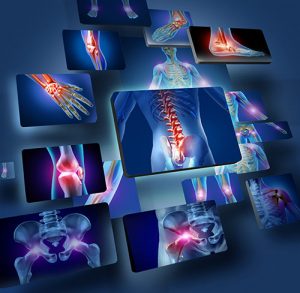Chinese medicine meets western MSK therapy
If you have picked up a sports injury, are struggling with chronic pain or are recovering from an operation, then you have come to just the right place. Here at Faye Pattison Physiotherapy, we provide some of the best intramuscular stimulation Chelmsford has to offer.
Intramuscular Stimulation (IMS), also referred to as dry needling is a very specific myofascial trigger point therapy using acupuncture needles. It’s far from just another kind of acupuncture though – it combines the aspects of this ancient technique with all the advances of Western medicine. Many people say that it’s a treatment that offers the best of both worlds – and we couldn’t agree more.
What is Intramuscular Stimulation Therapy (IMS)?
Although it is a treatment that is becoming more and more popular, a lot of people still do not know what intramuscular stimulation (IMS) involves. It’s a treatment that has its roots in the ancient Chinese practice of acupuncture, but IMS also uses Western medicine’s understanding of the treatment of pain. In traditional acupuncture, needles are placed in pre-determined points in the body. In IMS, your physiotherapist will examine you closely to see where the needles should be placed. So during IMS treatment, you’ll get physiotherapy that is tailor made to fit you.
How IMS Physio Works
IMS treats the cause of pain, so you will finally be able to get to the root of the problem. There are multiple benefits from IMS and it is a very effective treatment for acute and chronic pain. So what happens during a typical appointment? Well, the needles are inserted into the muscle belly in various locations throughout the muscle ‘trigger points’ and the goal for the therapist is to release the muscle which is tight and possibly shortened, pulling on the attachment sites of the muscles and presenting as pain within the body. Directly stimulating the muscles like this is a really effective way of relieving pain.
What to Expect from Your IMS Treatment Session
The needle goes in smoothly – there is no electricity or any other input, just the mechanical movement of the needle going in and out of the muscle to cause the release and stimulation. This increases blood flow and allows the muscle to start the healing process while helping the muscle to relax to a more ‘normal’ state. Although it hasn’t been around for as long as acupuncture and many forms of physio treatment, IMS physiotherapy has fast become one of the most popular treatments that we offer here at Faye Pattison Physiotherapy. Our patients love that IMS therapy sessions offer a more personalised treatment than traditional acupuncture and swear by its stimulating effects.
How Long Will You Need IMS Physiotherapy For?
The effects of IMS are really patient specific. The effects can be instant for some, and for others; the cumulative affect each session of IMS stimulates a certain amount of healing until the condition is healed. How long you’ll require intramuscular stimulation therapy for depends on your unique response to the treatment and how severe the original problem was. If you’re totally new to IMS, we’ll talk you through the process and answer any questions that you have about your upcoming treatment sessions.
Get in Touch to Find Out More About IMS Therapy
We welcome a diverse range of patients to our Chelmsford practice, and as you can see from the above list, we’re able to treat a wide range of afflictions. Whether your pain is as the result of a recent injury or you have been dealing with chronic discomfort for any years, IMS physio could be the perfect kind of treatment for you. Just get in touch with us today, and a member of our friendly ream will tell you all that you need to know.
To find out more visit our Blog or FAQ sections or Book an Appointment.
Intramuscular stimulation (IMS) can be used to treat:
- Achilles tendinopathy
- Acute and Chronic back, neck and joint pain
- All types of muscle pain
- Ankle and foot strains and sprains
- Back pain
- Calf strains
- Disk Problems
- Groin pain
- Hamstring Strains
- Headaches
- Heel pain
- Hip Pain
- Knee pain
- Neck pain
- Patella Tendinopathy
- Postural dysfunction
- Pre and post-operative conditions
- Repetitive strain disorders
- Sacro-Iliac pain
- Sciatica
- Scoliosis
- Shoulder pain
- Sports injuries
- Sprains and strains
- Whiplash















